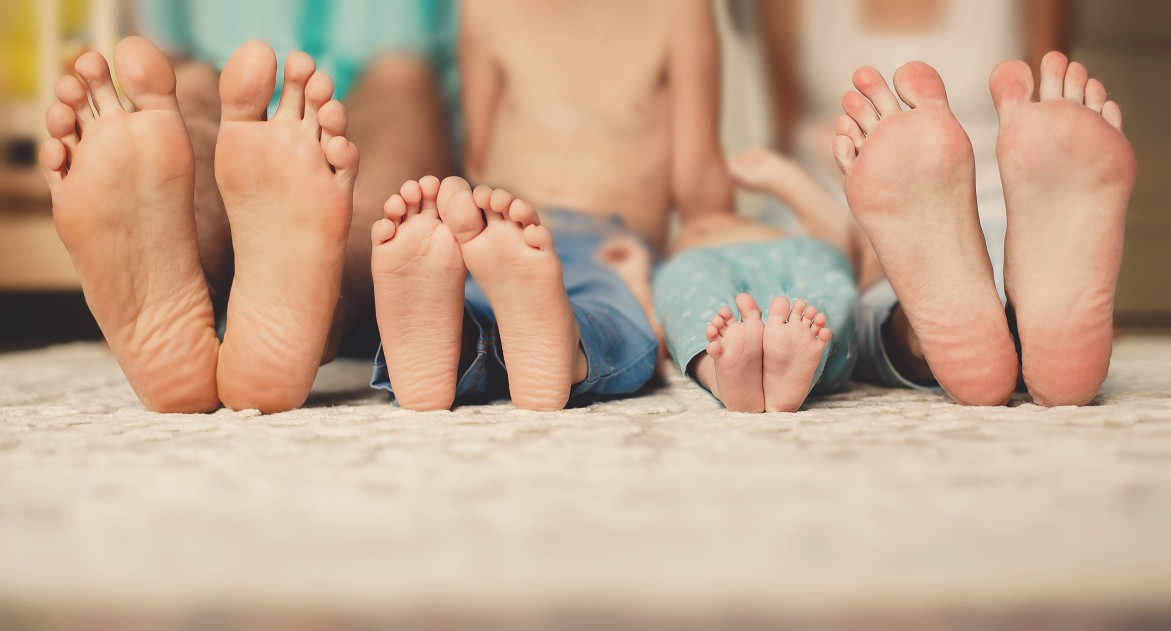Turns out that the pandemic has been good for one part of our bodies: our feet. All that walking we have been doing at home in socks or barefoot helped our feet to thrive and become healthier during those months of lockdown. It also just might mean we have to change our shoes.
After all, feet need flexibility. Shoes that force your feet to be held in firm positions and squeeze your toes together are bad for the health of your feet. Working from home meant less reasons to go out in tight dress shoes, high heels, or footwear that is structured. Instead, we spent more time in slippers, socks or simply went barefoot.
Not since childhood had we been able to freely walk about shoeless for so many hours a day. It was fun for us. More important, it was really good for our feet. When we put on our regular shoes we suddenly realized the sharp contrast between constricted feet and happy, carefree feet.
The effect could be felt on our overall wellbeing as well. After all, happy feet make for a happy person.
Feet had changed
Many customers called to say they had noticed their feet had changed during the COVID-19 lockdown, says Tricia Salcido, CEO of Softstar Shoes. The Philomath, Ore.-based company is a designer and maker of leather footwear.
Shoes that fit well before have now become too short, too tight, and too painful to wear, she says.
Toes are rebellious, heels are sore, and calf muscles are moaning when they are being forced into shoes that their owners had kicked a year ago to the back of the closet, she adds.
Listen to your feet
Salcido explains that shoes hold a significant cultural position in our lives when we are in public. Many people have been taught to believe pain is a side effect of the latest fashionable footwear.
Health experts suggest, however, that you should listen to what your feet are saying to you.
Footwear designs that are minimal—have little constriction on our feet—open up an avenue to obtain feedback from your soles, Salcido says.
Experts suggest that people should resist the idea that they have to force their feet to return to the “foot coffins” they had been wearing. They should search for designs that are closer to barefoot and that permit the muscles in their feet to be flexible and free.
Study on students
The benefit of minimalist shoes was demonstrated in an initial study held in Australia to research the effect of school shoes that are rigid on the feet of school children. In Australia authorities often require children to wear shoes that conform to a special dress code. Such shoes are normally stiff and bulky.
In the study, Dr. Shayan Quinlan of the Department of Exercise and Sport Science at the University of Sydney and a practicing chiropractor split 70 children aged from 9 to 12 into two groups. One group wore regulation school shoes and the other wore flexible minimalist shoes. They wore the shoes for nine months during school sessions, meaning they were worn for about 18 hours a week.
Initial findings were that the children who wore shoes that were flexible developed stronger muscles in their feet and had better balance.
Seek shoes that imitate
Before you become lost in the post-pandemic world, think about preserving the remarkable recovery your feet probably have made during the pandemic by obtaining a new pair of shoes that are minimalist, Salcido suggests.
Many designs of minimalist footwear are available from a number of footwear companies. These shoes imitate the way your feet are meant to move naturally and will blend into the workplace without being noticed.
Qualities to look for
Footwear that enhances barefoot natural function should include these qualities, according to Softstar:
• Flexibility
Avoid shoes that pressure your feet, forcing them into positions that are rigid.
Try to find shoes that have flexible soles and are made of material on the upper part of the shoes that moves along with you when you flex and bend your feet. Shoes should take on the shape of your foot. Your foot should not be forced to take on the shape of your shoe.
• Sufficient room for your toes
When a shoe pushes your toes together your natural way of walking and your balance are inhibited. Make sure your toes spread easily when going through the motion of walking.
• A sole of equal thickness
The sole of a shoe should be the same thickness from heel to toe. Avoid a shoe that is thicker at the heel or at any other part of the shoe.
• Non-toxic and able to breathe
The material that is used to make a shoe also can have an effect on your health. Your feet can suck up chemicals by contact through the skin, which experts calling transdermal absorption.
When you throw in the friction, warmth, perspiration, and pressure that occurs normally when wearing shoes the result is a soup of chemicals that is absorbed through your soles, footwear experts say.
It is best to find shoes that are breathable naturally and are made from materials that are natural and of a high quality, they suggest.






